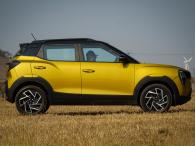News
Is it safe to drive my EV on the highway with regen braking set to 0?
I know for sure that Regen 0 in sparse traffic often gives the best efficiency and comfort.
BHPian electric_eel recently shared this with other enthusiasts.
For an ICE vehicle, it is a well-known fact that coasting in neutral is not a great idea from a safety perspective. In an EV, setting the regenerative braking to 0 has a similar feel
to it (from the driving perspective). Particularly in descents, it is advisable to use the regen braking and use the brakes to the minimum just like one would do with engine braking in an ICE car.
So my question is are you comfortable using Regen 0 on highways? As such I have been very wary of using it even though I know for sure that Regen 0 (unlike coasting in neutral) in sparse traffic often gives the best efficiency and comfort.
There is a notable difference between Regen 0 and coasting in neutral. In an ICE vehicle accelerating out is impossible from the neutral (by definition) whereas in an EV, press the throttle and your car accelerates. So the two are not the same.
Update: My question is not about efficiency. I am more interested in the perspective of safety.
Let me rephrase. Is it advisable (from the safety issue) to use regen 0? The typical argument given against coasting on neutral like in, as far as I see is not applicable for the regen 0 situation.
(Except of course the hill descent case there one should select the appropriate regen level to avoid problems like brake overheating.
Here's what BHPian jalsa777 had to say on the matter:
Firstly: Zero Regeneration is exactly equivalent to coasting in Neutral
However, it is 'safer' to use zero regens than to coast in neutral because of the difference between how the braking works in an EV vs ICE.
In an ICE car, it is not recommended to be neutral on downhill sections because all the retardation load of the vehicle will be on the brakes, i.e. on the brake disks and pads. This can cause overheating of the brakes and thus reduce braking force which can be dangerous.
However, in an EV, when you depress the brake pedal, the regen is activated and increased depending on the brake pressure. This works in conjunction with the physical brakes. Even at very low brake pressures, when the physical brakes haven't even yet reached their 'bite' point, EVs experience retardation due to regenerative action. Thus retardation load on the brakes is much lower and thus risk of overheating is lower.
Thus, technically, you can use zero regens without much safety concern.
Here's what BHPian mohanphadnis had to say on the matter:
I use regen 0 all the time on highways, but this is way easier with Kona / Ioniq 5/ EV6 because of the regen paddles, which means you can change the regen mode super quickly and can go to the highest regen level in a snap.
If I could not do this, I would stick to at least some regen and won't let the car just roll down.
Here's what BHPian mrgx9090 had to say on the matter:
Last weekend I was driving from Bengaluru to Chennai in my Kona and I was using Regen 0, I felt it was useful when it come to mileage because when I started I had 99% charge with a distance of 305 with AC on which means I was short of 35 plus kms to reach my home. However, since I started exploring the regen 0 option I was able to use the freewheel motion in the undulate roads and bridges. I didn’t wait for charging. When I reached home I had 35 kms of range left in my car. I felt to extend your mileage it’s a good option to use on highways considering you drive very sensibly during freewheel. Because breaking is totally different during 0 regen usage.
BHPian electric_eel had an update on the matter:
Regen 0 due to 100% SoC is probably more dangerous than regen 0 due to switching regen off in a multi-level regen EV. My analysis is purely theoretical and more knowledgeable folks can refute or confirm this. If you are willing to experiment and report then even better.
I think there is a theoretical difference between no regen due to 100% charge vs no regen due to setting regen 0. (I say this theoretically because it needs to be verified for the car in question)
- When the charge is 100 %, the car can only use the frictional component of brakes. Even for a light touch of the brake, one needs to engage the frictional brakes. (Reason given below so read on)
- When regen is set to 0 for a car which is not fully charged (say 60% SoC), the brakes can use a combination of regen plus frictional brakes. After all the user pressed the brake to slow down the car and it would be a waste to not use all the braking power at our disposal
Why can't I have regen at 100% SoC (as a safety feature)?
The regen braking in the car happens when the motor (which is run in generator mode during regeneration) is loading the charging circuit. This induces a back emf which adds the braking effect. Why does this happen? There are multiple ways to think about it but here is one (crude) way, the current in the circuit (due to the load which in this case is the charging circuit) generates a magnetic field that acts in opposition to the magnetic field of the permanent magnet and this adds repulsion. Think of two magnets with their south poles facing each other and approaching each other. The magnetic force repels and brings down their velocity.
When the car is 100% charged, the charging circuit cannot (rather will not be allowed by the BMS to) draw current from the generator. No current in the rotor coil means no back emf and no regen braking effect.
Is there some way to get regen braking (in addition to frictional braking) when SoC is 100% at least for emergencies? Yes, we can have a resistive load purely for this case. In this case, there should be a way to get rid of the resultant heat. I am not sure whether actual EVs have these.
Can regen 0 be as bad as 100 % SoC?
In a car which has multi-level regen, I am assuming even when the regen is disabled, explicit user brakes should activate the regen (assuming not fully charged). I do not see a reason why not to exploit this feature.
On the other hand, if your car has a single regen on/off switch, it could very well be implemented by a single switch which connects or disconnects the regeneration circuitry. So setting regen to 0 disconnect the load to the generator and thereby disabling regen braking entirely (much like the 100% SoC situation).
Check out BHPian comments for more insights and information.



















